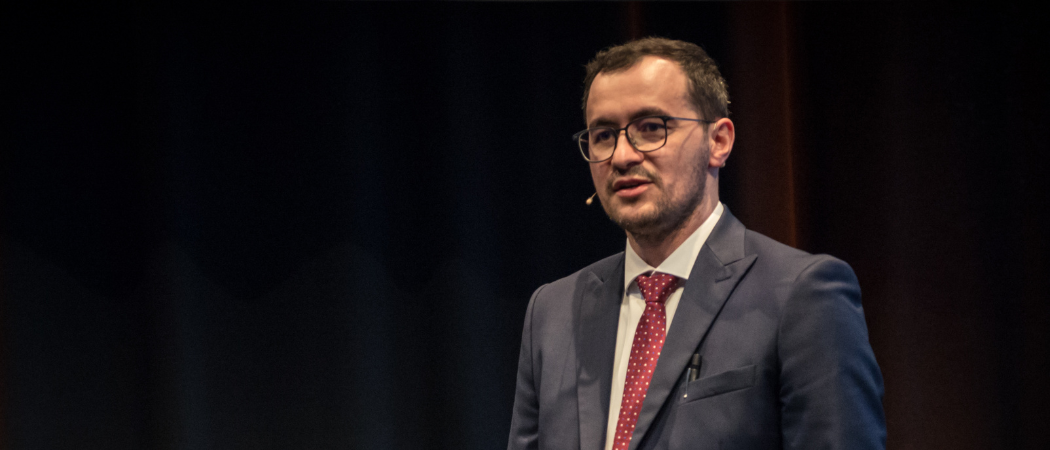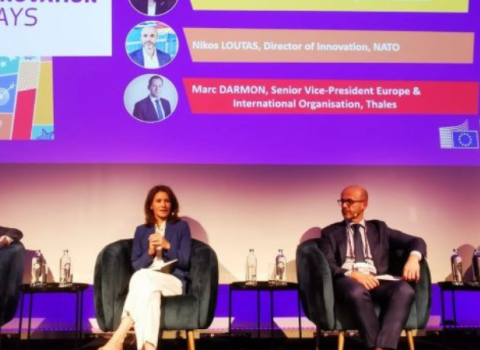The European Commission should clear the air of growing rumours about the future of EU research and innovation policy

Florin Zubaşcu, executive editor at Science|Business. Photo credits: Jeroen Vanhecke
Since Ursula von der Leyen started her second mandate at the helm of the European Commission, one thing has become abundantly clear: the EU needs to focus its efforts on defence and competitiveness so it can protect itself from Russian aggression, while churning out cutting edge technologies and innovative products and services that can compete with the US and China.
Inevitably, for the EU research and innovation bubble, that focus will translate into more investments in dual-use R&D and a Framework Programme that puts more emphasis on industrial collaboration and close-to-market innovations. There’s no end in sight for the war in Ukraine, while the US is unilaterally destroying the global trade system. Therefore the need to act on all fronts – including in science and technology – is perfectly reasonable.
But what’s not reasonable is the Commission’s secrecy about how the new geopolitical realities are shaping the structure and scope of its research and innovation funding. Instead, stakeholders are being kept in the dark and drip-fed rumours about dismembering FP10 and folding it into a new European Competitiveness Fund, limiting the independence of the European Research Council.
There is also much confusion about how the top brass in the Commission plans to allow dual-use projects in a Framework Programme that is civilian by law.
The rumours started when an internal Commission memo dated September 2024 was leaked to lobbyists and journalists in Brussels. The document revealed a scenario in which FP10 would be dismembered and its research and innovation schemes amalgamated into the European Competitiveness Fund. The goal was to concentrate and streamline EU efforts to resuscitate innovation, productivity and economic growth.
The main grievance behind this proposal was that the Commission’s programmes lack “strategic steer” and are too complex, which makes it difficult for industry to benefit from EU funding. The document also bemoaned the limited flexibility for reallocating funds, too many rules, gaps and overlaps, delays in access to funding and a lack of common governance.
The killer problem: managing all these programmes has become too cumbersome for the Commission. So, at least in theory, the goal would be for the Commission to deliver its programmes more efficiently with fewer resources.
The Commission has never confirmed or denied the existence of such plans. After all, its official policy is not to comment on “leaks and rumours,” even if some of its staff are not shy when it comes to spreading them.
After months of confusion and speculation, Ekaterina Zaharieva, EU commissioner for start-ups, research and innovation, added to the bonfire by saying that “we can have both” a Competitiveness Fund and a standalone FP10. While she wanted to reassure the research community that FP10 will continue as a standalone programme, Zaharieva also said the debate on the structure of the Competitiveness Fund is still ongoing inside the Commission.
So, what is going on exactly? Which people and which departments inside the Commission are the advocates of the Competitiveness Fund and which are defending a standalone FP10? What are the main arguments of the two camps? And how do they see these diverging proposals playing out in negotiations with member states and the European Parliament?
However, the most important question is how long will it take to get some answers? Given the amount of confusion and speculation around this topic, the Commission should clear the air as soon as possible.
Waiting until summer, when the proposals for the next multiannual EU budget and FP10 will be published, would unnecessarily extend the limbo and feed the Brussels rumour mill with needless speculation.
But the internal conflict inside the Commission is damaging not just for the EU research and innovation community but for all the other countries with an interest in collaborating with the EU. The uncertainty makes it impossible for the UK, Switzerland, Israel, Canada, Korea and other associated countries to plan ahead for FP10 or even spend money now to encourage participation by their researchers today.
The Commission, through its research commissioner, should come out and settle the growing rumours about the future of EU research and innovation policy.
Let’s not forget that, across the Atlantic, the Trump administration is unilaterally bulldozing decades of established norms and rules in R&D policy and funding without telling anyone outside the MAGA bubble of its plans.
There is no reason to believe that the Von der Leyen Commission is trying to do the same. But the Commission needs to come out now and explain its plans for FP10. The EU research and innovation community needs and deserves more clarity.





 A unique international forum for public research organisations and companies to connect their external engagement with strategic interests around their R&D system.
A unique international forum for public research organisations and companies to connect their external engagement with strategic interests around their R&D system.